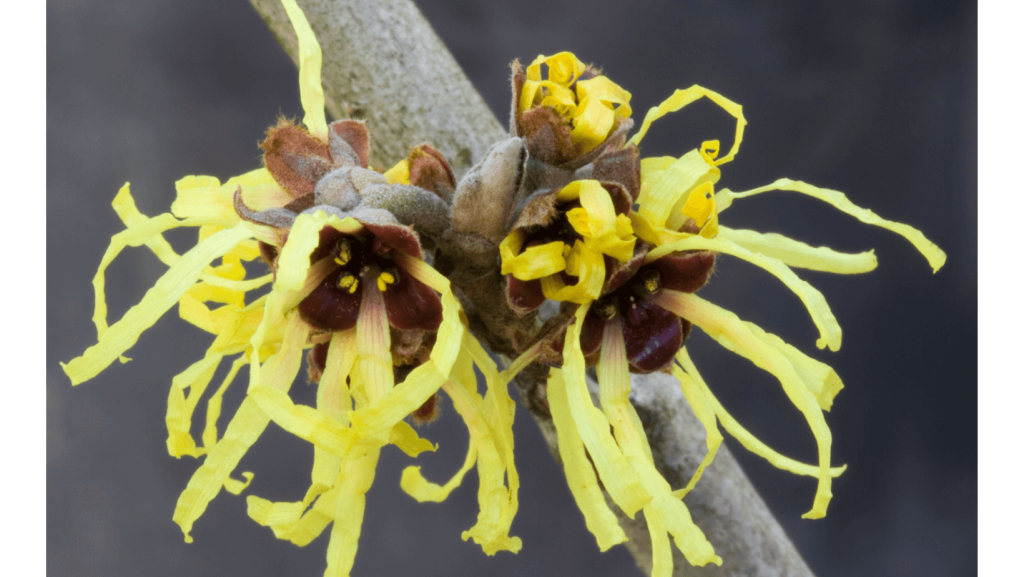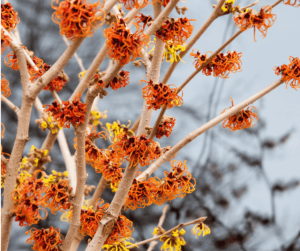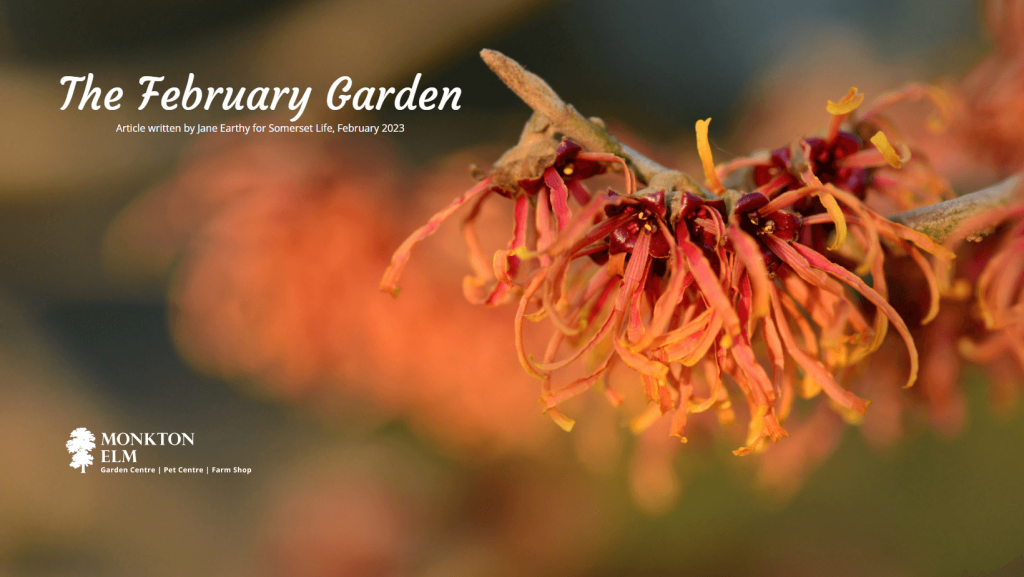The February Garden-
Depending on the temperatures that we experience during January, the garden may be showing signs of returning to life, albeit in small ways. Snowdrops, crocus and winter aconites have nosed their way above ground, and their flowering offers early flying insects the chance to enjoy the nectar. Certainly, their choice is limited although the bright yellow scented flowers of Mahonia will offer the chance of a feast.
Witch Hazel (Hamamelis) is another genus of shrub that will provide nectar for passing insects, but it also lights up the winter garden. The flowers are spidery, appearing in abundance along bare branches during January and February, and they fill the air with a subtle yet spicy fragrance and are predominately shades of yellow, red and orange. On close inspection, each flower is made of thin strap like petals, 4 to each bloom. Witch Hazels are slowly growing and over time form a low, spreading framework of branches. As such, they make excellent specimen plants, showing off their attractive shape without the distraction of other shrubs, perhaps underplanted with small early bulbs such as crocus.
A popular, easy to find Witch Hazel is ‘Arnold Promise’, which has bright yellow petals with red calyx. The thin petals unfurl on mild days, contrasting fabulously with blue sky, before curling up tightly for protection when temperatures drop. Reaching an eventual height of 4m, Arnold Promise is goblet shaped and very attractive. It also has good winter colour, as do most Witch Hazels, its large leaves turning yellow or red before they fall.


A favourite of mine is ‘Jelena’. I have it at home, where it has become a spreading shrub, underplanted with low and gracefully arching Carex ‘Evergold’ grass. Jelena’s flowers are a rich burnt orange colour, coppery in the low sunshine. Always a good choice, it’s been around since the 1950’s and has good autumn colour also. I leave it to look after itself and it never fails, flowering well each winter.
‘Diane’ is often cited as the best red flowered cultivar of Witch Hazel and I wouldn’t disagree, because the flowers have real depth of colour, due to the calyx being deep burgundy red. It comes from the same breeder of ‘Jelena’ and the autumn foliage is spectacular.
Hamamelis can cope with partial shade but thrive best in sunshine. Although soil with a neutral pH is fine, slightly on the acid side is even better. Witch Hazels are best left to form their own attractive shape, although pruning can be carried out in early spring if necessary. A mulch of compost at this time is beneficial too. The Hamamelis genus is extensive and worth exploring; there are many more garden-worthy varieties to enjoy.
Jobs for the February Garden
- Now is a good time to prune Wisteria side shoots to 2-3 buds to encourage flower buds to form.
- Trim native hedges before birds start to nest.
- Keep off the lawn if its very frosty or snowy, to minimise damage.
- If you didn’t sow sweet Peas in autumn, there’s still plenty of time – sow in deep pots in a cold greenhouse and protect against mice.
- Deadhead winter bedding such as pansies for a prolonged display.
- Cut the canes of autumn fruiting raspberries to the ground – new growth will fruit this year.
- Give your greenhouse a thorough clean before the new season starts.
- Divide clumps of Snowdrops as soon as flowering finishes to create new drifts.
- Prune dormant apples and pears now.
- Seed potatoes are now available from Monkton Elm– ‘chit’ (pre-sprout) some on a light but cool windowsill to get a head start.





